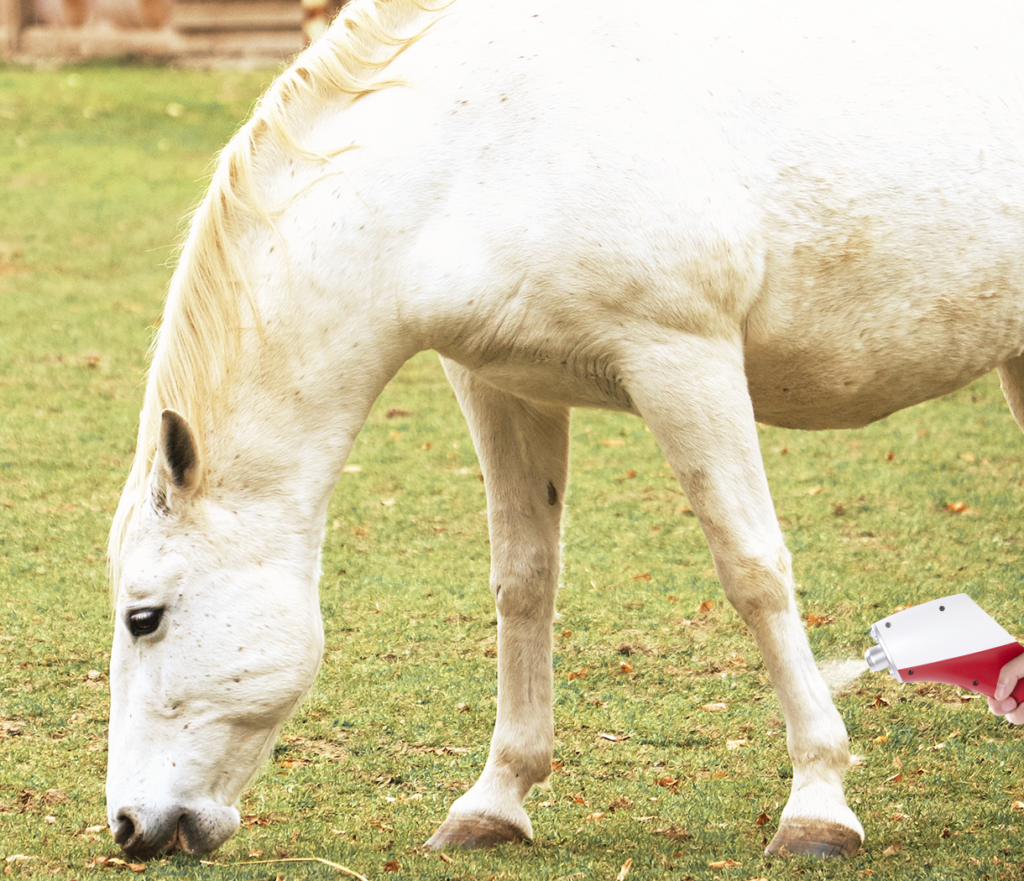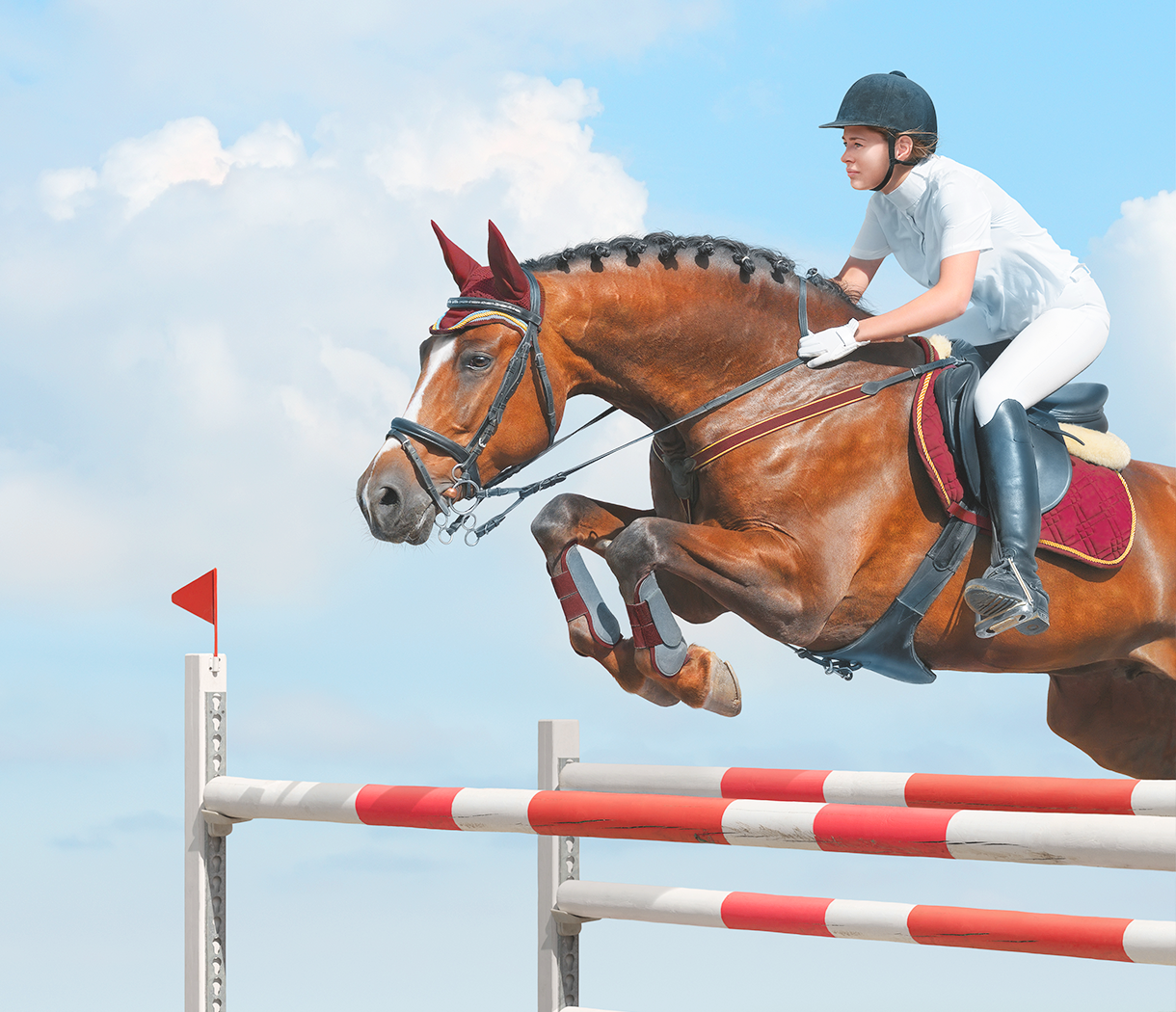Introduction: When the Strain Runs Deep
Suspensory ligament injuries are among the most challenging orthopedic conditions in equine sports medicine. These injuries affect the crucial structure that supports the lower limb—from the proximal metacarpus to the sesamoid bones—placing both horse and rider on a long road to recovery. Performance horses are especially at risk, as the suspensory apparatus bears immense biomechanical stress during movement. Conventional treatment often includes rest, anti-inflammatory medications, and controlled rehab exercises. While helpful, these methods can be slow and unpredictable. Enter CO₂ cryotherapy—a breakthrough technique delivering controlled thermal shock to reduce inflammation, pain, and tissue damage at a cellular level. This advanced modality has gained traction in equine rehabilitation, especially for suspensory injuries, thanks to its ability to stimulate healing and shorten recovery time. With CO₂ cryotherapy now integrated into modern treatment plans, equine athletes stand a better chance at a swift and sound return to performance.
Understanding the Suspensory Ligament in Horses
The suspensory ligament system represents one of the most biomechanically significant structures in the equine distal limb, serving as the primary support mechanism for the fetlock joint during weight-bearing phases of locomotion. This complex anatomical arrangement requires thorough understanding to appreciate the challenges associated with injury management and the potential benefits of advanced therapeutic interventions.
Anatomy and Function
The suspensory ligament, anatomically termed the interosseous muscle, originates from the proximal dorsal aspect of the third metacarpal bone and the adjacent carpal bones, extending distally as a broad, flat structure composed primarily of collagenous fibers with remnant muscle tissue. This ligament bifurcates in the distal metacarpal region, forming medial and lateral branches that attach to the abaxial surfaces of the proximal sesamoid bones. The suspensory apparatus also includes the extensor branches, which pass around the sesamoid bones to join the common digital extensor tendon, creating an integrated support system. During locomotion, this structure experiences tremendous tensile forces, particularly during the stance phase when it prevents hyperextension of the fetlock joint while storing and releasing elastic energy to enhance locomotor efficiency.
Common Causes of Suspensory Ligament Strain
Suspensory ligament strain typically results from a complex interplay of biomechanical factors, training intensity, and individual predisposing characteristics. High-impact activities such as jumping, racing, and sudden directional changes create excessive tensile forces that can exceed the ligament’s structural capacity, leading to microscopic and macroscopic fiber disruption. Repetitive loading without adequate recovery periods contributes to cumulative microtrauma, progressive fiber degeneration, and eventual clinical manifestation of injury. Age-related changes in collagen structure, conformation abnormalities affecting limb alignment, and pre-existing subclinical inflammation can predispose horses to suspensory ligament strain. Additionally, poor footing conditions, inappropriate training surfaces, and inadequate conditioning programs significantly increase injury risk, particularly in young horses undergoing intensive training regimens.
Symptoms Every Owner Should Watch For
Early recognition of suspensory ligament strain is crucial for implementing appropriate treatment strategies and preventing progression to more severe injury. Clinical signs typically begin with subtle lameness that may be most apparent during specific gaits or after exercise, often described as mild to moderate forelimb or hindlimb lameness with characteristic patterns depending on the affected branch. Palpable heat, swelling, and sensitivity along the ligament course, particularly in the proximal metacarpal region or at the bifurcation, indicate active inflammation and tissue damage. Horses may demonstrate reluctance to extend the affected limb fully, shortened stride length, and altered gait mechanics as compensatory mechanisms. Diagnostic imaging, including ultrasonography and magnetic resonance imaging, reveals characteristic changes in ligament fiber architecture, including hypoechoic areas, fiber disruption, and associated inflammatory changes that confirm the diagnosis and guide treatment planning.
Why CO₂ Cryotherapy Is a Game-Changer
The application of CO₂ cryotherapy to suspensory ligament injuries represents a paradigm shift in equine sports medicine, offering targeted therapeutic benefits that address the fundamental pathophysiological processes underlying ligament injury and healing. This advanced treatment modality provides unprecedented precision in delivering controlled thermal therapy to affected tissues.
CO₂ 냉동 요법이란 무엇인가요?
CO₂ 냉동 요법은 다음을 활용합니다. 가압 이산화탄소 가스 delivered at -78°C to create controlled thermal shock in targeted tissues, inducing immediate physiological responses that promote healing and pain relief. The system employs specialized delivery devices that convert liquid CO₂ into gaseous form, creating a precisely controlled stream of super-cooled gas that can be directed to specific anatomical locations. Unlike traditional ice therapy, CO₂ cryotherapy provides consistent, reproducible temperature delivery with exact timing control, typically applied for 10-15 seconds per treatment area. The rapid temperature change creates immediate vasoconstriction, followed by reactive vasodilation that enhances circulation and promotes healing responses. This technology incorporates real-time temperature monitoring and precision targeting systems to ensure optimal therapeutic delivery while maintaining safety parameters for equine patients.
How It Works on Ligament Injuries
The therapeutic mechanism of CO₂ cryotherapy on ligament injuries involves multiple interconnected physiological pathways that address both immediate symptoms and underlying pathological processes. The rapid thermal shock triggers immediate vasoconstriction, reducing local blood flow and limiting inflammatory mediator accumulation at the injury site. This vasoconstriction is followed by reactive hyperemia, which enhances oxygen and nutrient delivery to injured tissues while facilitating metabolic waste removal. The extreme cold exposure stimulates the release of endogenous pain-modulating substances, including endorphins and enkephalins, providing immediate analgesic effects. Additionally, the thermal stress activates cellular repair mechanisms, including heat shock protein production and growth factor release, which promote collagen synthesis and tissue remodeling. The controlled inflammation reduction helps minimize secondary injury while preserving the beneficial aspects of the healing inflammatory response.

Benefits of CO₂ Cryotherapy for Suspensory Ligament Injuries
CO₂ cryotherapy offers multiple therapeutic advantages specifically relevant to suspensory ligament injury management, addressing both acute symptom relief and long-term healing promotion. The immediate analgesic effects allow for more comfortable movement and reduced stress responses in injured horses, facilitating better compliance with rehabilitation protocols. Rapid inflammation reduction helps minimize secondary tissue damage and prevents the formation of excessive scar tissue that could compromise ligament function. The enhanced circulation following treatment promotes optimal healing conditions by delivering essential nutrients and growth factors to the injury site while removing inflammatory debris. The precise temperature control and short application time minimize the risk of thermal injury while maximizing therapeutic benefits. Furthermore, the non-invasive nature of the treatment allows for frequent application without the complications associated with pharmaceutical interventions, making it an ideal adjunct to comprehensive rehabilitation programs.
Scientific Evidence and Veterinarian Insights
Recent research in equine sports medicine has provided compelling evidence supporting the efficacy of CO₂ cryotherapy in managing soft tissue injuries, including suspensory ligament strain. Clinical studies demonstrate significant improvements in lameness scores, ultrasonographic appearance, and functional outcomes in horses treated with CO₂ cryotherapy compared to conventional treatments alone. Veterinary practitioners report enhanced patient comfort, reduced recovery times, and improved long-term functional outcomes when incorporating this technology into their treatment protocols. The precise temperature control and reproducible treatment parameters allow for standardized protocols that can be adapted to individual patient needs and injury severity. Histological studies of treated tissues show improved collagen fiber organization, reduced inflammatory cell infiltration, and enhanced neovascularization, indicating superior healing responses. These findings support the integration of CO₂ cryotherapy as a valuable component of comprehensive suspensory ligament injury management programs.
Application and Safety Considerations
The successful implementation of CO₂ cryotherapy for suspensory ligament injuries requires careful consideration of treatment protocols, safety measures, and integration with other therapeutic modalities. Proper application techniques and safety protocols are essential for maximizing therapeutic benefits while minimizing potential complications.
When and How to Use CO₂ Cryotherapy
CO₂ cryotherapy for suspensory ligament injuries should start as soon as possible after diagnosis, ideally within 24-48 hours for acute injuries. Chronic conditions can also benefit from treatment. The horse should be placed in a safe, confined area with proper restraint to ensure safety. The CO₂ device is held 2–3 cm from the treatment site, delivering -78°C gas for 10–15 seconds per area. Multiple sites along the ligament, identified by clinical exam and imaging, are treated. Each session lasts about 15–20 minutes, with 2–3 minute breaks between applications to let tissues cool. Treatment frequency depends on injury severity and healing. Acute injuries often require daily sessions for the first week, then every other day as recovery continues. Chronic injuries typically benefit from 2–3 treatments weekly over several weeks for best results.
Comparison with Other Modalities
CO₂ cryotherapy offers distinct advantages over traditional cooling methods and other therapeutic modalities commonly used for suspensory ligament injuries. Compared to ice therapy, CO₂ cryotherapy provides more precise temperature control, deeper tissue penetration, and more consistent therapeutic effects without the risks of thermal injury associated with prolonged ice application. The treatment requires significantly less time than traditional ice therapy while achieving superior therapeutic outcomes. When compared to therapeutic ultrasound, CO₂ cryotherapy can be applied immediately after injury without the contraindications associated with ultrasound therapy in acute inflammatory conditions. Unlike non-steroidal anti-inflammatory drugs, CO₂ cryotherapy provides immediate pain relief without systemic side effects or gastrointestinal complications. The treatment complements other rehabilitation modalities such as controlled exercise, physical therapy, and regenerative medicine techniques, enhancing overall treatment effectiveness when used as part of a comprehensive rehabilitation program.
Contraindications and Precautions
While CO₂ cryotherapy is safe for most horses, it is not suitable for all. Avoid treating areas with open wounds, infections, or poor circulation. Horses with cold sensitivity, previous adverse reactions to cold, or certain metabolic and vascular conditions may need alternative treatments. Use caution in horses with weakened immune systems, as cryotherapy might delay healing. Pregnant mares require veterinary consultation before treatment. To ensure safety and effectiveness, start with clean, dry skin and closely monitor the area for excessive redness, blistering, or discomfort. Limit exposure time to prevent thermal injury, and never leave the procedure unattended. Proper restraint is essential to keep the horse still during treatment. Afterward, check for any delayed skin reactions or sensitivity. Successful CO₂ cryotherapy depends on well-trained operators and properly maintained equipment. Identifying contraindications and following precautions helps prevent complications, making cryotherapy a safe and beneficial therapy when applied carefully.
Real-Life Recovery: Case Studies and Testimonials
The practical application of CO₂ cryotherapy in clinical settings provides valuable insights into its effectiveness and real-world benefits for horses recovering from suspensory ligament injuries. These case studies and testimonials demonstrate the transformative impact of this advanced therapeutic modality on equine patient outcomes.
Performance Horses on the Mend
A 7-year-old Warmblood show jumper presented with acute suspensory ligament strain following a competitive event, exhibiting grade 3 lameness and significant swelling in the proximal metacarpal region. Traditional treatment protocols had previously resulted in extended recovery periods and incomplete return to athletic function. Implementation of CO₂ cryotherapy within 12 hours of injury, combined with controlled exercise and regenerative therapy, resulted in dramatic improvement in clinical signs within 48 hours. The horse demonstrated progressive lameness improvement, with return to full athletic function achieved in 8 weeks compared to the typical 4-6 month recovery period. Ultrasonographic monitoring revealed superior healing patterns and improved fiber organization compared to previous injuries treated with conventional methods. A 5-year-old Thoroughbred racehorse with chronic suspensory ligament desmitis showed remarkable improvement following a comprehensive treatment protocol incorporating CO₂ cryotherapy, achieving successful return to racing with no recurrence of injury over 18 months of follow-up monitoring.
Owner and Trainer Perspectives
Equine owners and trainers consistently see better outcomes when CO₂ cryotherapy is used for suspensory ligament injuries. A professional event rider reported her horse showed noticeable comfort and mobility improvement within days, allowing earlier rehab and faster return to training. A racing trainer noted shorter recovery time and reduced veterinary expenses, calling the method cost-effective. Horse owners value the non-invasive nature and absence of systemic side effects, which offer peace of mind during recovery. Improved mobility and visible comfort reassure them that healing is on track. Overall, CO₂ cryotherapy helps horses bounce back sooner, with less stress on both animal and owner, making it a trusted part of modern equine care.
Conclusion: Cryo-Support That’s a Step Ahead
CO₂ 냉동 요법 is a breakthrough for treating suspensory ligament injuries in horses. It reduces pain and inflammation while promoting tissue repair—offering faster healing with fewer complications. Research and real-world cases show it outperforms many traditional treatments. The treatment is safe, non-invasive, and time-efficient, making it ideal for busy stables. Horses get back to training sooner, and performance doesn’t suffer. For vets, trainers, and owners, it’s a smart solution that preserves equine health and reduces downtime. As innovation shapes equine medicine, CO₂ cryotherapy proves to be more than a trend—it’s a reliable tool that supports recovery and keeps horses doing what they love.
자주 묻는 질문
Recovery varies by severity, but CO₂ cryotherapy often cuts healing time by 30–50%. Acute cases may improve in 2–3 weeks; chronic ones may take 6–8 weeks.
Yes, it’s generally safe. Older horses may heal slower and need tailored protocols, but the non-invasive nature makes it a good fit for them.
Yes, it’s useful preventively—especially post-exercise. Regular use may reduce inflammation, boost circulation, and support tissue health in high-performance horses.
For acute injuries, daily use in the first week is ideal, then every other day. Chronic issues benefit from 2–3 sessions per week.
Look for reduced lameness, less swelling, better motion, and improved ultrasound imaging. A return to normal gait and exercise tolerance is a strong sign.


